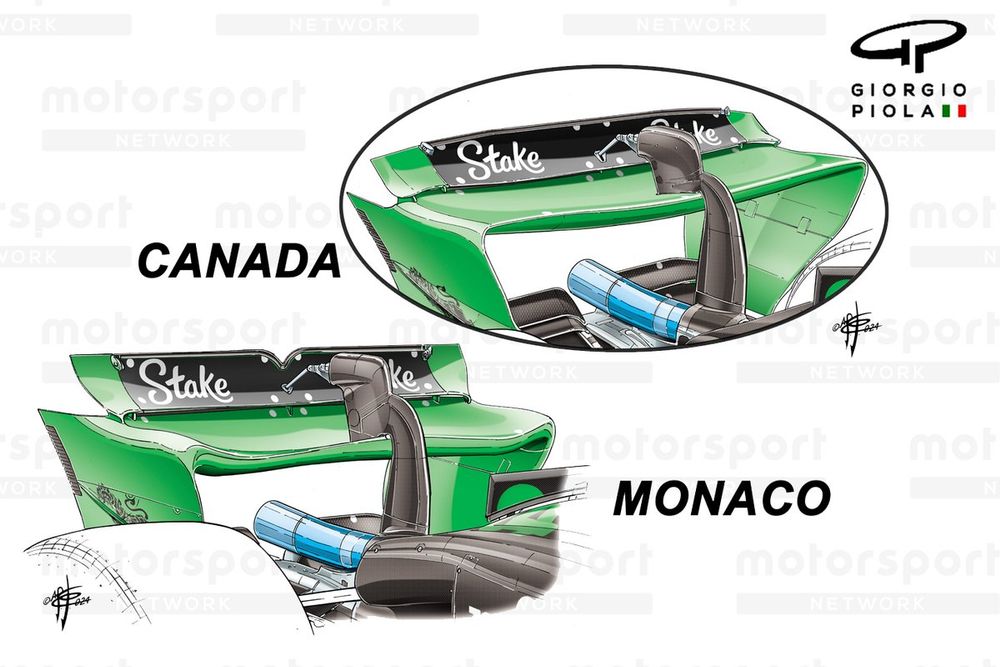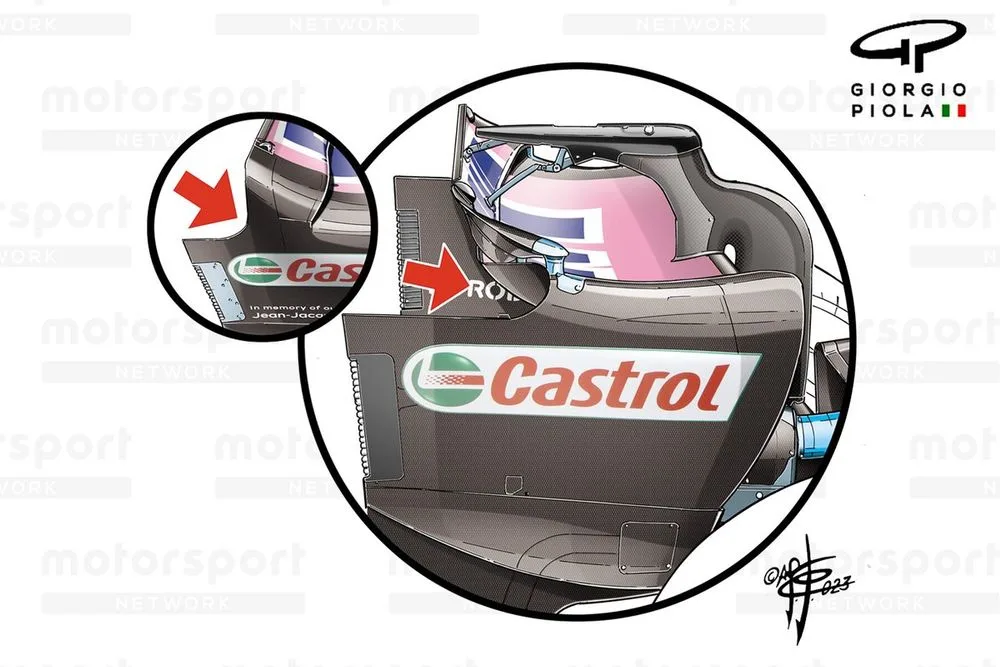The semi-detached rear wing tip solution is one example of this right now – as rivals clearly saw the potential on offer when Aston Martin and Alpine simultaneously debuted original versions of the two slightly different solutions in Monaco last year.
All teams have been in search of means to recover some of the losses that the regulations imposed on them at the rear, as the endplate and flap juncture are very different when compared with how they were shaped in the past.
This was for good reason though, as teams had become extremely adept at managing the tip vortex to increase downforce and reduce drag. While good for car performance, this was troublesome for a trailing car as it had an impact on the overall wake profile.
Designers cannot unlearn what they already know though and they quickly realised that if they could unravel some of the limitations that the regulations seemed to impose on then, while introducing some of their old ideas in a new way, they could recoup some lost performance.
Just over a year on from the arrival of these two solutions, there’s still a healthy dose of development being carried out on the now quite divergent development branches that have emerged.
Alpine A523 rear wing side comparison
Photo by: Giorgio Piola
The main route that’s been taken by most of the teams has the Alpine design at its core, with a metal bracket angled in opposition to the endplate and inboard of the juncture.
However, as the teams have iterated their designs, there’s been a move towards an elongated lower tip, which is drawn down over the bracket and mainplane’s edge. There has also been a reshaping of the tip section to provide assistance to the upper flap.
These optimisations, along with a remodelling of the endplate cutout, are all designed to help with the trade-off between creating more downforce and reducing drag, while being mindful of how powerful DRS is when deployed.

Sauber mono pillar, Monaco vs Canada
Photo by: Giorgio Piola
Sauber introduced new rear wings into its pool at both Monaco and Canada, as the team made the switch from a double mounting pillar arrangement to a single element.
Interestingly, the Swiss-based outfit hedged its bets, as the solutions, which are on either end of the downforce spectrum, have two different semi-detached tip sections. The higher downforce variant follows in the footsteps of the Aston Martin design, while the lower downforce offering follows the…
Click Here to Read the Full Original Article at Autosport.com – Formula 1 – Stories…

